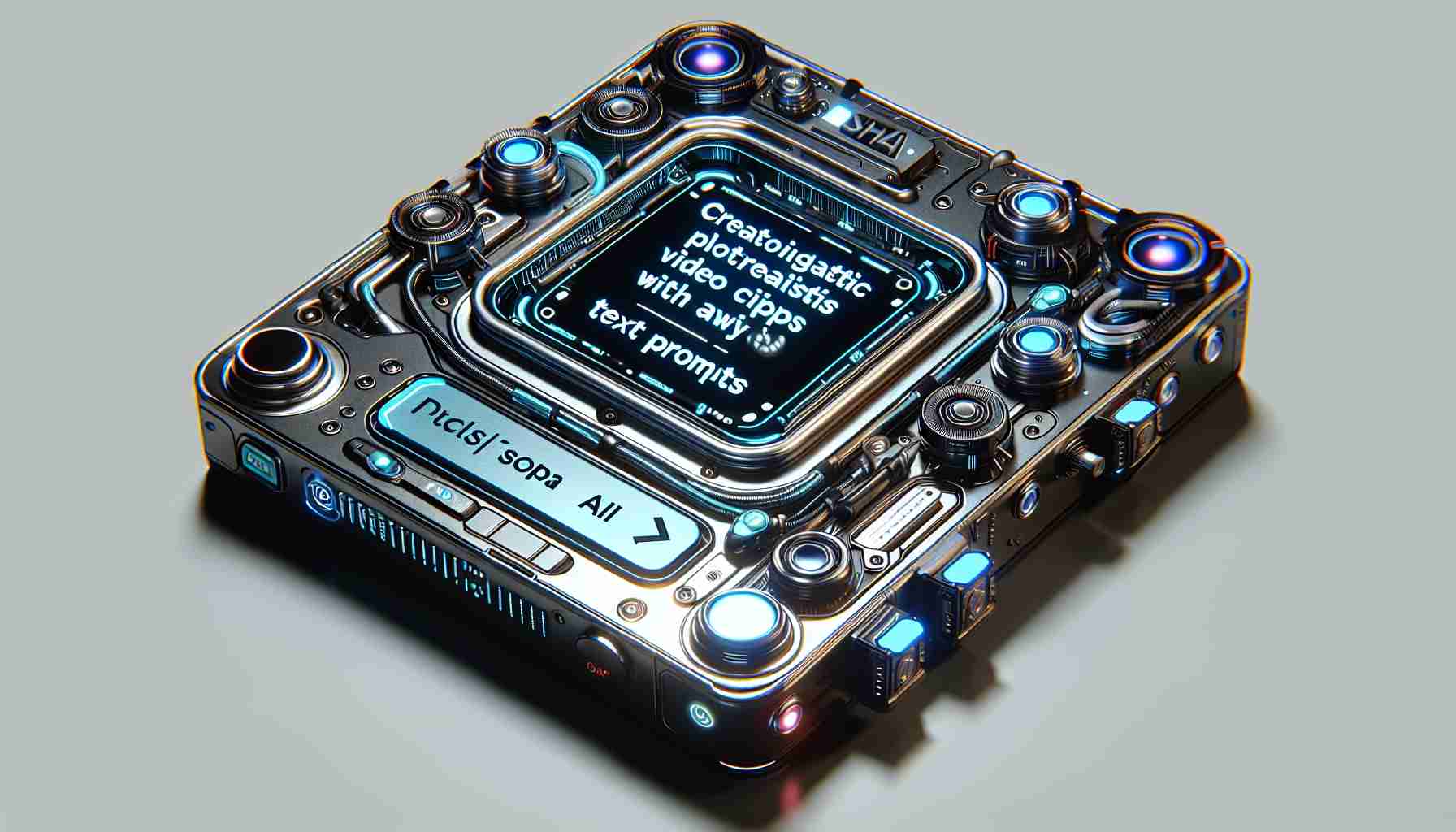OpenAI, the brains behind ChatGPT, has introduced Sora, a groundbreaking AI tool capable of generating photorealistic videos based on text prompts. Sora can produce synthetic clips that are nearly indistinguishable from real footage and can respond to specific requests for complex scenes, multiple characters, and precise details.
The unveiling of Sora has generated significant interest, with users invited to submit prompts for videos that the AI tool then brings to life. However, while the videos may appear hyperrealistic at first glance, there are certain errors that arise. In one clip featuring a cooking session hosted by a grandmother social media influencer in a Tuscan country kitchen, several anomalies are evident. For instance, a spoon magically appears, a ring disappears, a rolling pin balances at an impossible angle, and a wooden wine bottle seems out of place. OpenAI acknowledges that its model can struggle with physics and situations involving multiple characters, leading to spontaneously appearing animals or people.
Despite these glitches, Sora showcases its capabilities by capturing detailed requests for camera angles and video styles. It can produce footage that ranges from uncannily realistic to cartoonish, reminiscent of a Pixar film. For example, an extreme close-up shot of a 24-year-old woman’s blinking eye in Marrakech during the magical golden hour is a testament to Sora’s ability to deliver stunning visuals.
As with any AI tool, concerns arise regarding the potential impact on artists, animators, and filmmakers. The fear of job displacement and the proliferation of convincing “deepfake” videos flooding the internet are legitimate worries. Addressing these concerns, OpenAI has set strict boundaries for Sora, rejecting requests involving extreme violence, sexual content, hateful imagery, celebrity likeness, or the intellectual property of others. The company also plans to engage outside security experts to identify possible weaknesses and prevent misuse of the technology.
While the dataset used to train Sora remains undisclosed, OpenAI assures that it comprises publicly available and licensed footage. The company has faced criticism in the past, with accusations of disregarding copyright laws in scraping data for its AI models. OpenAI maintains that its practices align with fair use rules.
Sora, accompanied by the success of ChatGPT and DALL-E, marks OpenAI’s continued innovation in the AI space. With Sora’s impressive video generation capabilities, the future of multimedia creation is set for a transformative journey, while OpenAI remains committed to addressing ethical concerns and pushing the boundaries of AI technology.
FAQ Section:
1. What is Sora?
Sora is a groundbreaking AI tool developed by OpenAI that can generate photorealistic videos based on text prompts. It is capable of producing synthetic clips that are nearly indistinguishable from real footage and can respond to specific requests for complex scenes, multiple characters, and precise details.
2. How does Sora showcase its capabilities?
Sora showcases its capabilities by capturing detailed requests for camera angles and video styles. It can produce footage that ranges from uncannily realistic to cartoonish, similar to a Pixar film. For example, it can generate extreme close-up shots or scenes during the magical golden hour.
3. What are some errors that arise with Sora?
While the videos generated by Sora may appear hyperrealistic, there can be certain errors. For example, in one clip featuring a cooking session, anomalies such as objects appearing or disappearing, unrealistic physics, or spontaneously appearing animals or people may occur.
4. What are the concerns associated with Sora?
Concerns arise regarding the potential impact on artists, animators, and filmmakers, as well as the proliferation of convincing “deepfake” videos flooding the internet. The fear of job displacement and misuse of the technology are valid worries.
5. How does OpenAI address these concerns?
OpenAI has set strict boundaries for Sora to address concerns. It rejects requests involving extreme violence, sexual content, hateful imagery, celebrity likeness, or the intellectual property of others. The company also plans to engage outside security experts to identify possible weaknesses and prevent misuse of the technology.
6. What about the dataset used to train Sora?
The specific dataset used to train Sora remains undisclosed, but OpenAI assures that it comprises publicly available and licensed footage. OpenAI states that its practices align with fair use rules and it is committed to ethical considerations.
Related Links:
– OpenAI (OpenAI’s official website)
– ChatGPT (OpenAI’s AI-powered chatbot)
– DALL-E (OpenAI’s AI model for image generation)
The source of the article is from the blog maestropasta.cz

